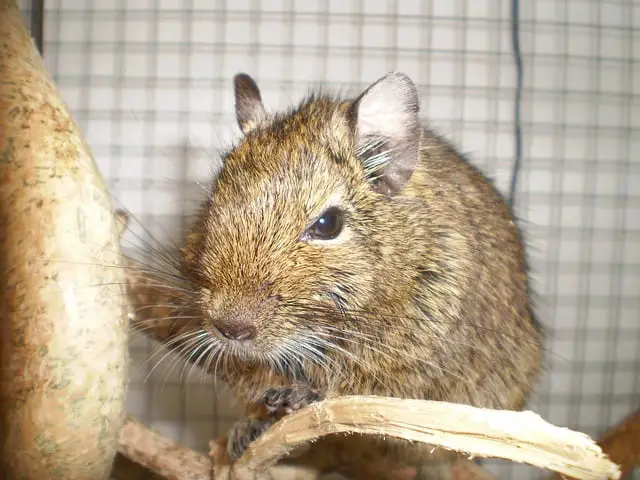
Degu is a rodent native to Latin America, very lively and sociable. Let’s find out in this new guide. It is a rodent similar to the gerbil.
Degu is the name of a rodent native to Chile and similar in appearance to that of the gerbil . In nature they live in large groups and are very lively and communicative animals even in the domestic context. Easy to breed, they require strict compliance with certain rules for their care.
About Degu
Degu is also known as Octodon , this rodent is native to Latin America. In particular, it grows in Chile and tends to live within large family groups. The extremely communicative nature of these small animals depends on this.
Chilean degu
These specimens preferably live in the Andes in Chile between 500 and 1000 meters in height.
Degu tail
A very particular feature of these animals is the possibility of detachment of the tail, formed by a thin layer of epidermis. In case of danger or perception of threat, the animal can detach the tail, which does not grow back, leaving the vertebrae uncovered.
In addition, the paws with claws are also peculiar , thanks to which the degu is able to climb. These small rodents also use their claws to dig underground burrows in which up to a hundred specimens can be housed.
Pet degu
These cute rodents can be kept indoors as pets . Lively and curious, they are social animals used to living in groups and easy to care for. However, it is necessary to keep in mind some useful indications to be followed constantly and rigorously.
Caring for degu:
Caring for degu requires particular attention in the administration of the foods included in the daily diet .
The water must be changed every day , periodically cleaning the drinking bottle drip to avoid hygienic problems. The setup of the cage must keep in mind the social needs of these animals.
Better then to use cages that also develop in height, in addition to ensuring the necessary space for movement. Finally, given the high sociality of these specimens it would be preferable to grow at least two at a time.
Degu wooden houses
An alternative accommodation to the cage can be represented by a terrarium. The wooden houses, on the other hand, constitute lodgings for accommodation that these rodents will inevitably tend to gnaw on.
Communicating with Degu:
These little rodents are very communicative. They are able to emit different characteristic noises based on the emotional state to be expressed. Interacting with them since they are puppies undoubtedly helps the development of communication skills.
Does Degu Bite?
The ottodonti, if left free in the house, can bite and gnaw on anything. Furthermore, if handled improperly (picked up or stroked too vigorously) they can manifest an aggressive biting attitude.
Degu diseases
It is recommended that you take it to a vet visit immediately after purchase . In case of good health, it will then be possible to limit oneself only to periodic visits once a year. Refusal of food, diarrhea and killing, however, are signs of a possible disease in the animal. In this case it is necessary to have it examined immediately.
Degu reproduction
After a gestation of about 3 months, the females give birth to a variable number of puppies (from 2-4 up to even 10). To avoid the proliferation of these animals in the domestic context it is advisable to sterilize the females or the males.
Degu babies
While requiring maternal care, puppies are already able to take solid food within a few days of birth. The actual weaning, however, occurs around 4-6 weeks of life.
What do Degus eat?
The Degu are herbivores and feed on different varieties of vegetables and roots . However, it is good to completely exclude eggplant, potatoes and green parts of tomatoes from their diet.
These foods, in fact, risk turning out to be poisonous for small rodents. Sweet foods are also to be excluded because they could cause damage. Some foods, however, are to be preferred.
The degù, in fact, are greedy for fresh grass and hay , to be preferably included in their daily diet.
How long does degu from Chile live?
Growing in its natural habitat, the degu typically tends to live up to 3 years. As a pet, however, the small rodent has a longer life expectancy, which can be up to 10 years.
Degu cost
The purchase of these small rodents can easily be done in pet shops. Generally a specimen costs around $120 to $150. In any case, it is always good to keep in mind that it is a pet animal, to be cared for with care throughout its life.






